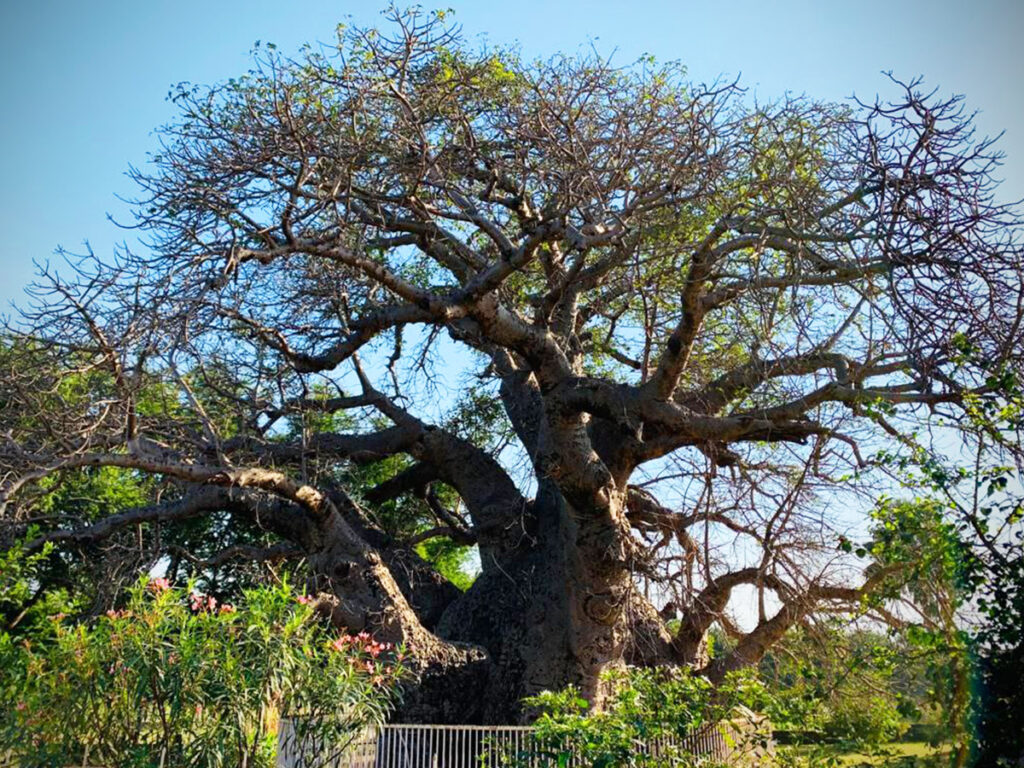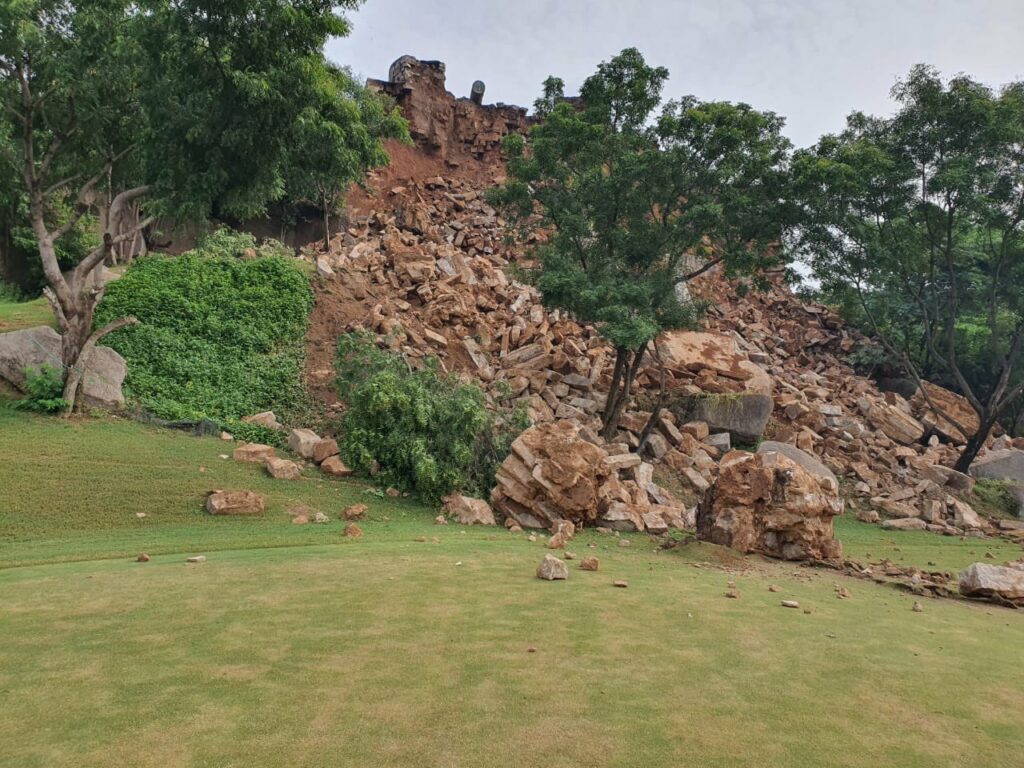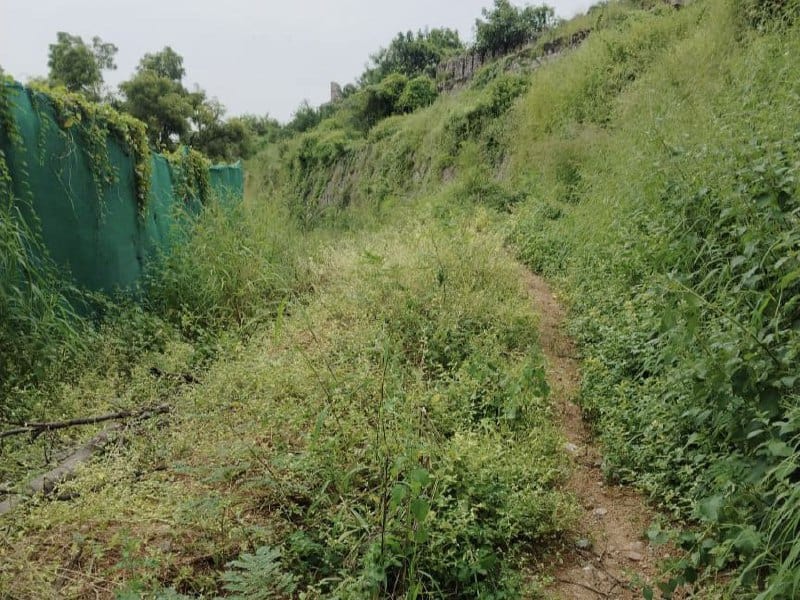Hyderabad: A year after heavy rains damaged the pathway leading to the ancient Baobab tree or ‘Hathiyan ka Jhad’ (as known in local parlance) in Golconda fort’s Naya Qila, the route still lays damaged and in disrepair. The Archaeological Survey of India (ASI) is waiting for the Greater Hyderabad Municipal Corporation (GHMC) to finish pipeline works underground, due to which it cannot repair the abutting fort boundary wall.
“We have already written to the GHMC two months ago and at a recent meeting also we asked the GHMC to complete the work so that we can do our job as well,” said a senior ASI official who did not want to be named. A portion of the route in Naya Qila that leads to the Baobab tree caved in last year due to heavy rains and heavy drainage inflow from the Shah Hatim lake behind the Naya Qila area.
The Naya Qila area of the Golconda fort is also fully accessible to the public, which the Archaeological Survey of India (ASI) has also clarified in the past. The site was in the news last year after it was found that security personnel of the Hyderabad Golf Club (HGC) has been wrongly preventing visitors from seeing parts of the Naya Qila like the Mustafa Khan mosque.
Moreover, in March last year, a scuffle broke out in front of the Naya Qila area when a few drunk men attacked ASI guards and the golf course security personnel who were manning the entry gate. The assailants demanded entry into the Naya Qila, and stabbed one of the guards. Aside from that, half of of the ancient site has also been taken over by a private run gold course.
The Hyderabad Golf Course (HGC) has occupied a majority of the Naya Qila area of Golconda Fort and has expanded to 18 holes over the years. The club however has no control over the areas which house some important historical sites like a 400-year-old Baobab tree, the Mustafa Khan, and bastions like Laila and Majnu.

Photo: Mohammed Hussain
“We can start our work to strengthen the wall only after the drainage lines underneath are laid. That only the GHMC can do, so we are waiting for that. The drain from Shah Hatim flows into the Golf Course side, which has also blocked it, due to which the water accumulated on the route and it was damaged. There is an outlet channel built, diverting the drain/water to the Moti Darwaza of the Golconda fort outside, but drain pipes have to be laid for that,” the ASI official told Siasat.com
Hyderabad: Naya Qila in Golconda fort accessible to public, says ASI
Naya Qila history
The Naya Qila area is in fact believed to be about over 400 years old, and is a part of the Golconda dynasty’s (which founded Hyderabad in 1591) remaining heritage in Hyderabad. The Naya Qila area, which is now cut-off from the Golconda fort due to local encroachments, was developed into an external fortification after the first Mughal attack (during the time of Emperor Shah Jahan) on Hyderabad in 1656.
It has two huge bastions called Laila and Majnu, of which Majnu continues to be in a state of disrepair after its collapse during monsoons in 2021. The ancient historic site was one of the few places which witnessed damage during heavy rains in 2021 in the fort. The Archaeological Survey of India (ASI), which runs the historical site, was supposed to undertake repairs, but that has not happened so far as well.
ther parts of Naya Qila which are open to the public are the Baobab tree, which is believed to be over 400 years old (it is said to have been planted there by African friars), the Mustafa Khan Masjid (which was built in 1561 and predates Hyderabad), and the Mulla Khyali Masjid, which is believed to be named after the Deccan poet Mulla Khyali.

While the Majnu Bastion’s collapse is the latest instance of the city’s heritage getting damaged, in the past the HGA had also disallowed the general public from entering the Naya Qila area. However, according to the ASI, there is no such restriction and the public is free to visit the place.
The Golconda Fort and the Charminar are two monuments that fall under the jurisdiction of the ASI, which works with the central government, while all the other heritage sites like the Qutb Shahi Tombs come under the purview of the Archeology Department of the Telangana government. Last year, a petition was also created to save Naya Qila and the Golconda fort by local Hyderabadis.
History of Golconda Fort
The Golconda Fort’s origins are traced back to the 14th century when the Rajah of Warangal Deo Rai (under the Kakatiya Kingdom which ruled from Warangal) built a mud fort. It was taken over by the Bahmani Empire between 1358 and 1375. Later, it was developed into a full-fledged citadel by Sultan Quli who founded the Qutb Shahi kingdom in 1518 following the death of the last sovereign of Bahmani Emperor Mahmud Shah.
Sultan Quli was a commander and later governor of Tilang (Telangana), under the Bahmani Empire (1347-1518), when its second capital was at Bidar. Sultan Quli, who was originally from Hamadan in Iran, rose to the level of Governor under the Bahmani Empire in the early 16th century. At this point in time, he was given the fort, around which he began developing a walled city. It eventually came to be called Golconda Fort (a name derived from Telugu Golla-conda, or shepherds hill).
The fort has 87 bastions, and eight gates, of which a few are not accessible to the general public as they are under the army’s control. It is believed to be one of the Deccan’s most impregnable forts and had kept Mughal emperor Aurangzeb’s army at bay for eight months until he succeeded and conquered Hyderabad in 1687.
Hyderabad was founded in the year 1591 by Mohd. Quli Qutb Shah, the grandson of Sultan Quli, with the Charminar being the city’s foundation. The city turned 429 years old in 2020.







